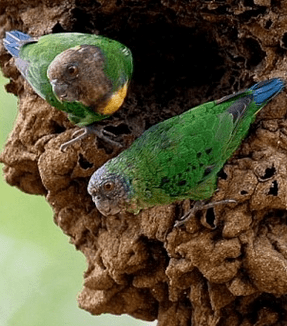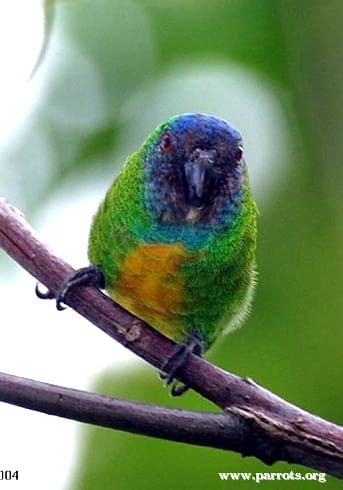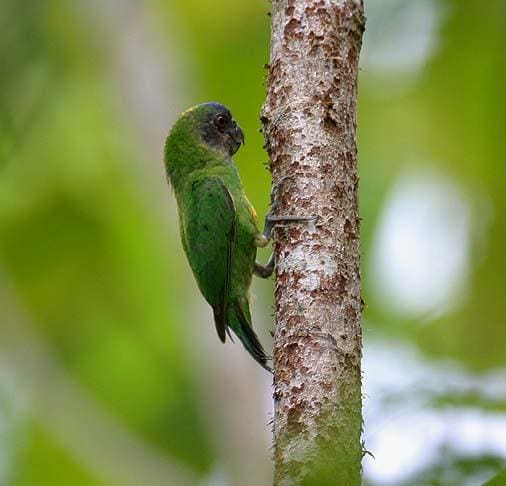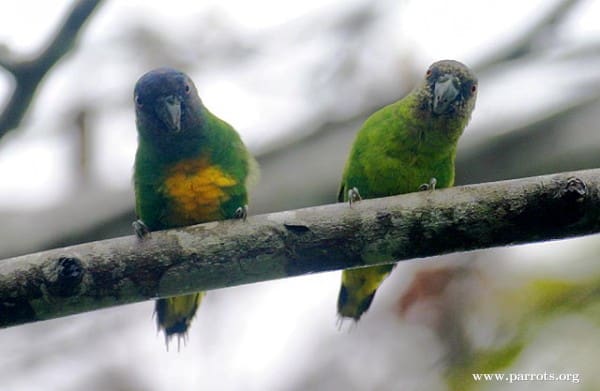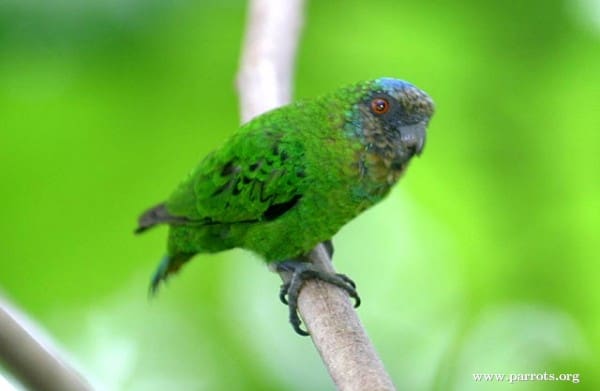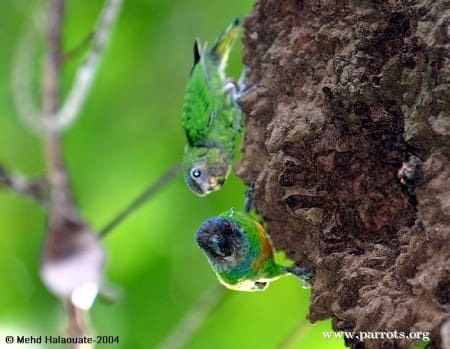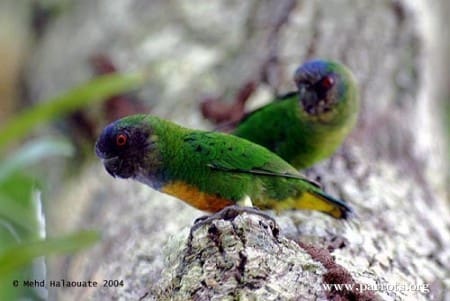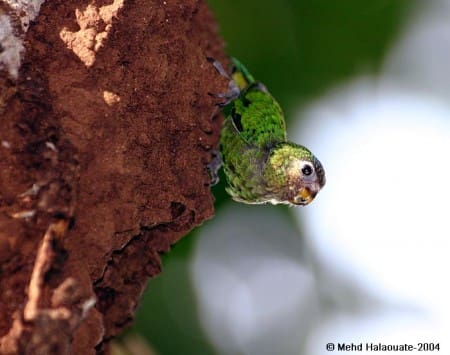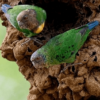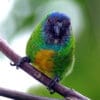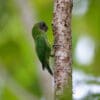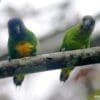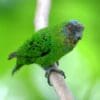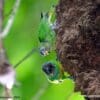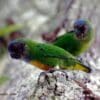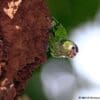Geelvink Pygmy Parrot
Also known as:
Biak Pygmy Parrot
Also known as:
Biak Pygmy Parrot
DID YOU KNOW?
The pygmy parrots have extra-long toes to help them climb easily in the trees. They also have very strong, stiffened tailfeathers to help them brace against tree trunks.

Micropsitta

geelvinkiana
Size:
9 cm (3.5 in)
Weight:
13-17 g (0.45-0.6 oz)
Subspecies including nominate:
two: M.g. geelvinkiana, M.g. misoriensis
Colour Adult:
M.g. geelvinkiana: Male-green underwing coverts; deep grey/brown forehead, lores to cheeks and ear coverts, the cheek feathers margined with dark blue; deep purple/blue crown to eyes, bordered on occiput by varying yellow patch; blue throat to sides of foreneck; orange/yellow centre of breast and abdomen; blue central tail feathers, with green/black lateral feathers. Beak grey. Eye brown/red. Female-paler grey/brown face and forecheeks, with green hindcheeks and ear coverts; yellow patch on occiput absent; green/yellow underparts.
M.g. misoriensis: Male-dark grey/brown head, with blue line bordering on hindneck; yellow mark on nape. Female-as in male, but yellow on nape absent; crown feathers faintly margined with blue.
Colour Juvenile:
M.g. geelvinkiana: As in adult female but with pale yellow beak tipped with grey/brown.
Call:
Calls are high-pitched short “tsee tsee”. Also short high-pitched warbled notes.
More Information:
Content Sources:
CITES
Birding Indonesia
BirdLife International
Cornell Lab of Ornithology/Birds of the World
Parrots: A Guide to Parrots of the World, Juniper and Parr, 1998.
Parrots of the World, Forshaw, 2006. 2010 edition
Lexicon of Parrots, Thomas Arndt.
Captive Status:
Not found in aviculture.
Longevity:
—
Housing:
—
Diet:
—
Enrichment:
—
Nest Box Size:
—
Clutch Size:
Possibly 2.
Fledging Age:
—
Hatch Weight:
—
Peak Weight:
—
Weaning Weight:
—
World Population:
Unknown, thought to be stable.
IUCN Red List Status:
Least Concern
CITES Listing:
Appendix II
Threat Summary:
Not globally threatened. A BirdLife “restricted-range” species. There has been no noticeable population decline in the past twenty years. Appears to be tolerant of degraded forest.
Range:
M.g. geelvinkiana Numfor Island in Geelvink Bay, Indonesia.
M.g. misoriensis: Biak Island in Geelvink Bay, Indonesia.
Habitat:
Found up to 300 m (9840 ft) in lowland forest, secondary growth forest, open cultivated areas with isolated trees and gardens.
Wild Diet:
Probably lichen, fungi, seeds, flowers, fruits and insects and their larvae.
Ecology and Behaviour:
Usually seen in groups of 4-5 birds. Very shy. Will associate with other birds in low lying shrubbery.
Clutch and Egg Size:
Possibly 2.
Breeding Season:
Probably June-August. Nest is in arboreal termitarium.
Related Links:
—
